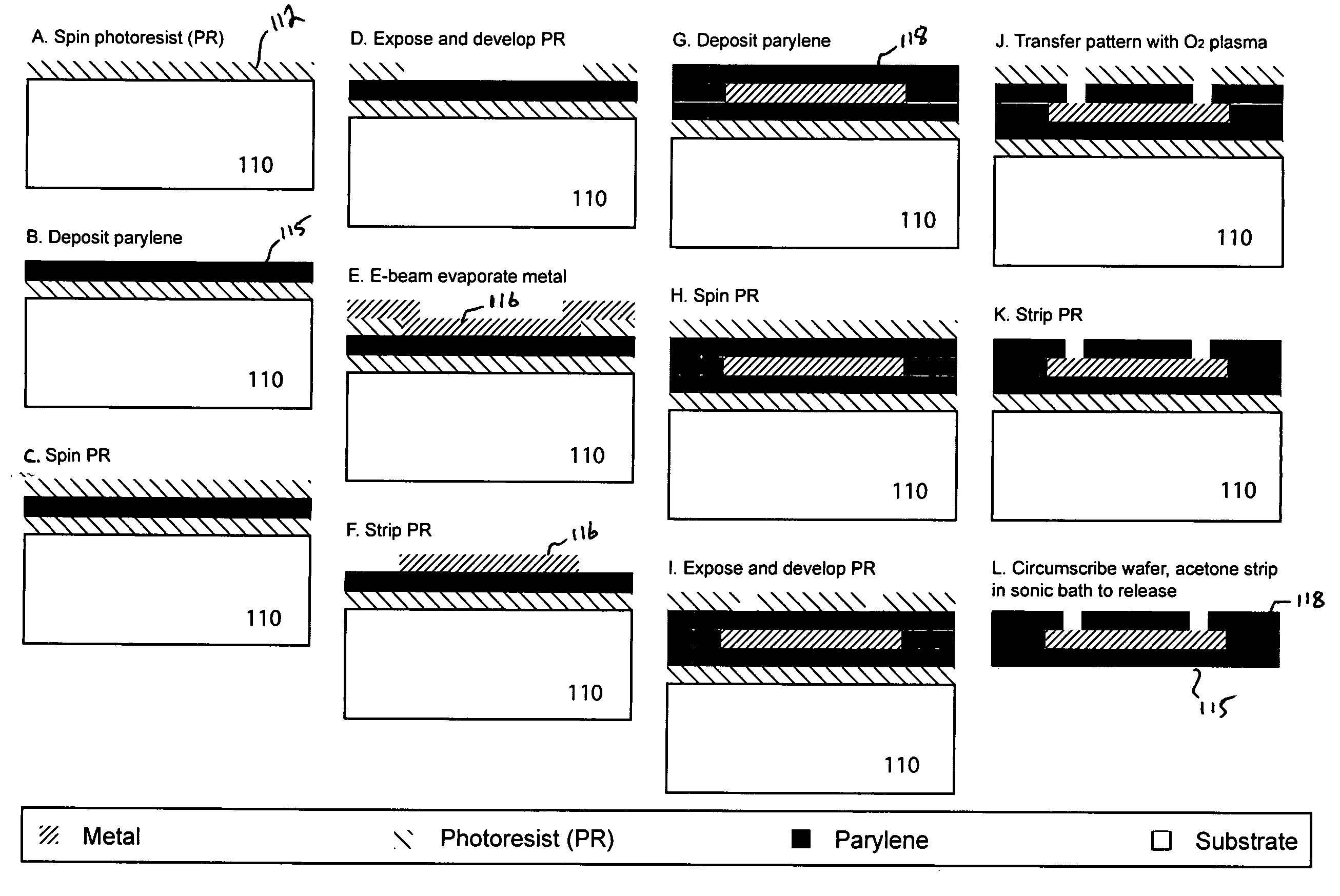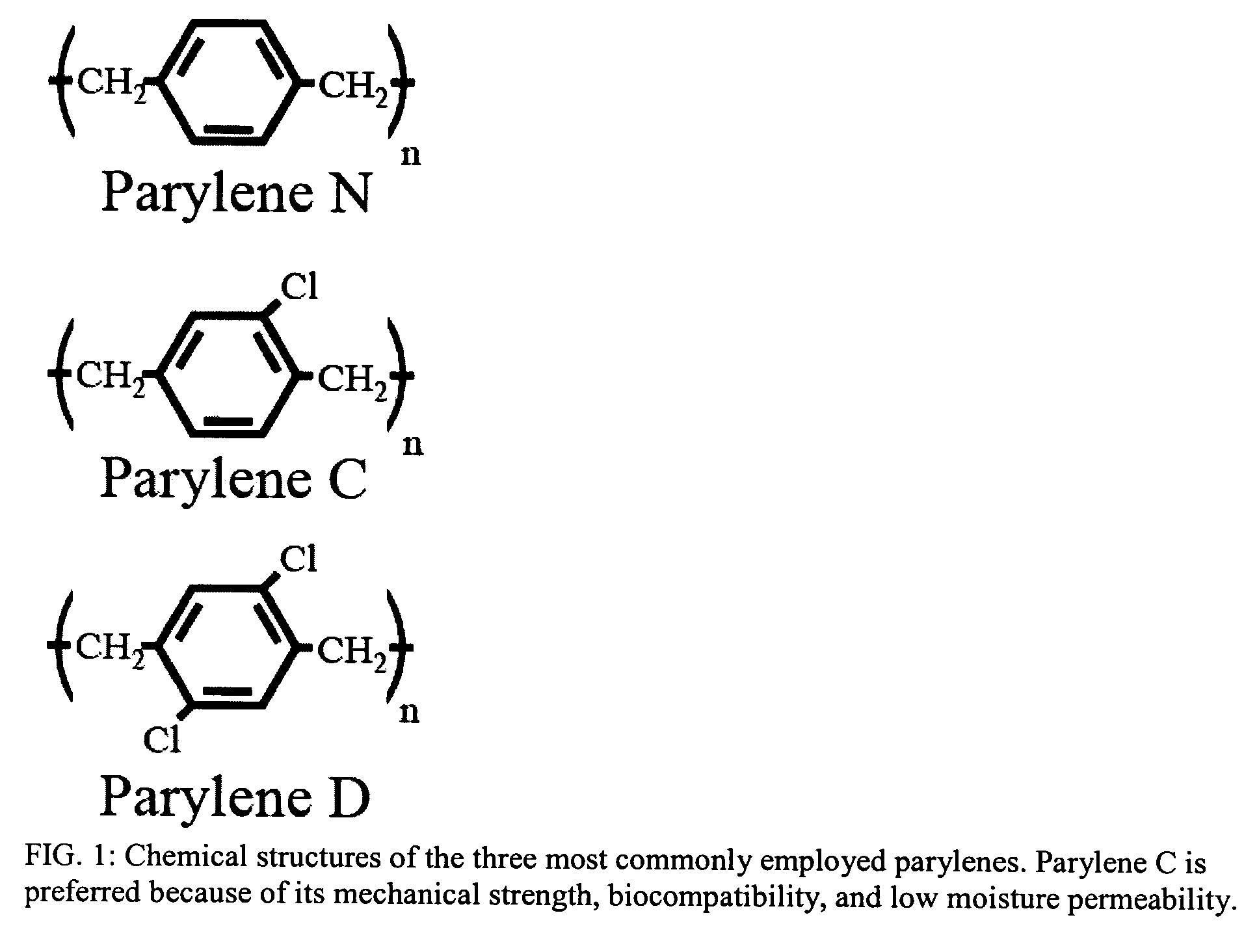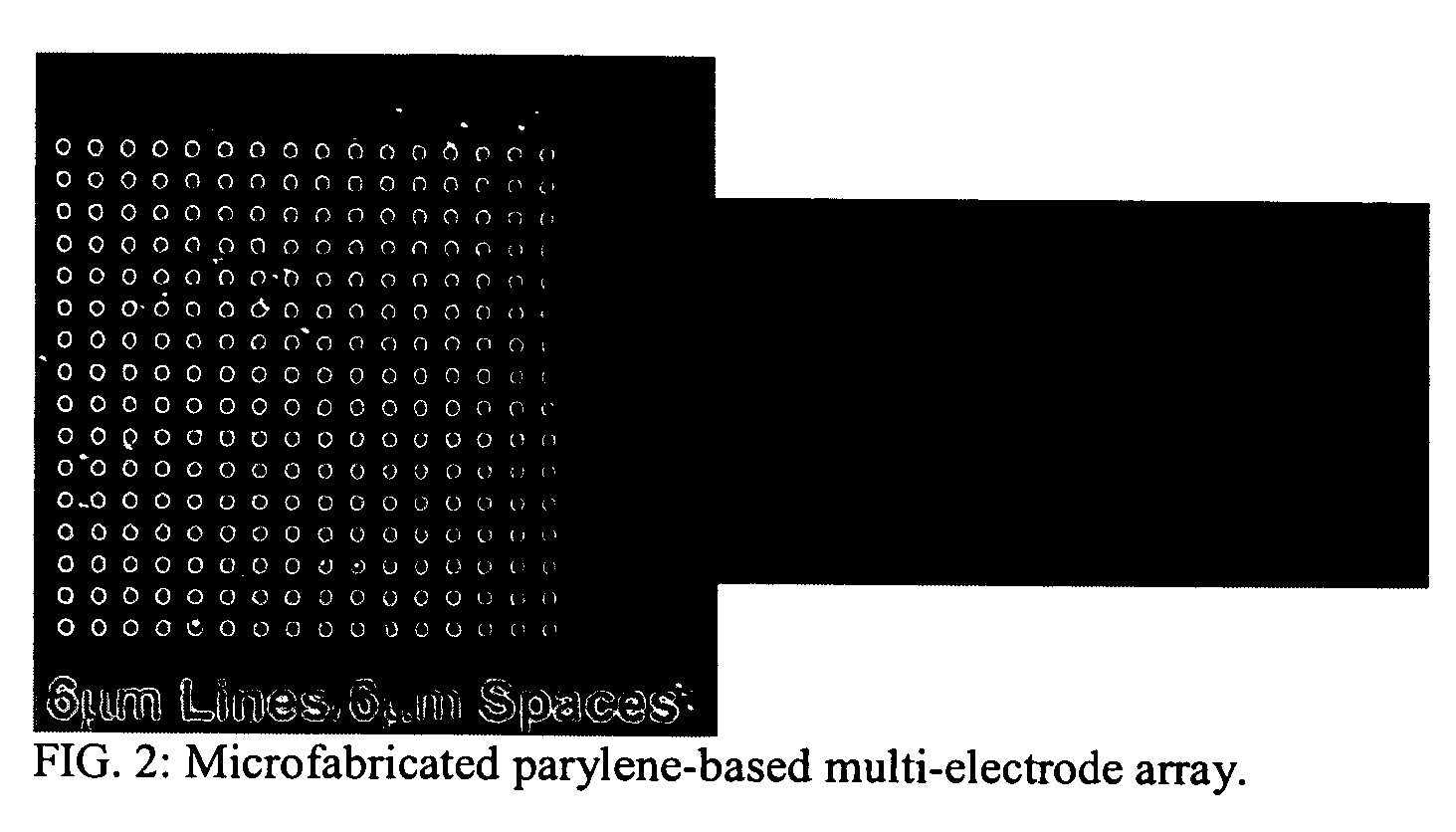Parylene-based flexible multi-electrode arrays for neuronal stimulation and recording and methods for manufacturing the same
a multi-electrode array, parylene-based technology, applied in the direction of spinal electrodes, solid-state devices, resistive material coatings, etc., can solve the problems of limited device size and architecture, and the material used in the device must be biocompatibl
- Summary
- Abstract
- Description
- Claims
- Application Information
AI Technical Summary
Benefits of technology
Problems solved by technology
Method used
Image
Examples
Embodiment Construction
[0020]The present invention provides parylene based electrode array devices and method of manufacturing the same. The devices according to the present invention include one or a plurality of electrodes embedded in a parylene “wrapper” comprised of a parylene substrate and one or more parylene layers covering the electrodes. Holes or apertures formed in the parylene layer(s) expose the electrodes to the external environment and allow the electrodes to stimulate or record signals depending on the application. One or several electrode layers may be formed in the parylene.
[0021]Parylene is a USP Class VI biocompatible polymer that can be deposited through a highly-conformal vapor deposition process. Types of parylene include parylene C, F, A, AM, N, and D. Of the three most common types of parylene, shown in FIG. 1, parylene C is perhaps the most widely used in industry. The advantages of the use of parylene include its proven biocompatibility, its strength and flexibility (e.g., Young'...
PUM
| Property | Measurement | Unit |
|---|---|---|
| diameter | aaaaa | aaaaa |
| diameter | aaaaa | aaaaa |
| Young's modulus | aaaaa | aaaaa |
Abstract
Description
Claims
Application Information
 Login to View More
Login to View More - R&D
- Intellectual Property
- Life Sciences
- Materials
- Tech Scout
- Unparalleled Data Quality
- Higher Quality Content
- 60% Fewer Hallucinations
Browse by: Latest US Patents, China's latest patents, Technical Efficacy Thesaurus, Application Domain, Technology Topic, Popular Technical Reports.
© 2025 PatSnap. All rights reserved.Legal|Privacy policy|Modern Slavery Act Transparency Statement|Sitemap|About US| Contact US: help@patsnap.com



